Review: DVO Topaz 3 Air Shock
DVO’s Topaz 3 is the latest generation of their air shocks built to handle everything from XC riding to enduro racing. Inside, it uses DVO’s expanding rubber bladder damper solution that is said to provide the smoothest direction changes. For 2023, the strength of the inner shaft has been beefed up by 27% too.
One of DVO’s specialties is shock tuning, and for $150 USD their techs will custom build a shock specifically for you and your frame. After answering a series of six questions, any of their shocks (and forks) can be hand built to your needs and the bike’s specific linkage design.
One of DVO’s specialties is shock tuning, and for $150 USD their techs will custom build a shock specifically for you and your frame. After answering a series of six questions, any of their shocks (and forks) can be hand built to your needs and the bike’s specific linkage design.
DVO Topaz 3 Details
• Adjustable bladder pressure
• 3-position low-speed compression switch
• Dynamic rebound
• Positive and negative air volume tuning options
• Sizes: 190 x 40 - 230 x 65mm metric and 165 x 40 - 205 x 65mm trunnion
• Weight: 492g (205x60mm)
• MSRP: $550
• dvosuspension.com
• Adjustable bladder pressure
• 3-position low-speed compression switch
• Dynamic rebound
• Positive and negative air volume tuning options
• Sizes: 190 x 40 - 230 x 65mm metric and 165 x 40 - 205 x 65mm trunnion
• Weight: 492g (205x60mm)
• MSRP: $550
• dvosuspension.com
The Topaz 3 costs $550 USD and is available in nearly every size under the sun from 190 x 40mm to 230 x 65mm metric sizes and 165 x 40 to 205 x 65mm trunnion mount options. DVO also revised the shape of the damper housing to fit into more frames as well.
Adjustments
At first glance, the Topaz 3 doesn’t have the usual clickers you’d find on more common shocks, but DVO has incorporated a few clever ways to let the rider tune both the damping and air spring to their liking.
Externally, there is just a single rebound knob and a 3-way low-speed compression adjuster. The rebound knob has 9 clicks in the range, each making a noticeable change, and the low-speed adjuster is more of a climb switch.
For those riders hoping for tool-free compression adjustment, the shock can be retrofitted with two external dials to control high and low-speed compression for between $200 and $250 USD. DVO has a step-by-step procedure for home mechanics and shops to tackle this, but special tools are required. It's worth mentioning that these adjusters will come as stock equipment on the unreleased Topaz X.
Another option is to experiment with bladder pressure. This can be tuned between 140-180 psi by connecting the provided shock pump to the Schrader valve under the tool-free cap on the side of the housing. The process is as simple as changing the spring rate.
How does it work in comparison to an IFP? The theory is the same, but the components are slightly different. Instead of an air-sprung piston, the pressurized bladder is compressed as the damper cycles fluid into the chamber. DVO prefers the bladder design for its lower friction characteristic since it doesn’t use an O-ring to separate the oil and air, ultimately leading to smoother direction changes between compressing and rebounding. Adding more pressure to the bladder will resist the oil flow and therefore lead to a firmer feeling shock.
The air spring pressure ranges between 100-300 psi with the possibility to tune both the positive and negative chambers by adding or subtracting small plastic spacers. On the positive side, adding more volume spacers will make the air spring more progressive and resist bottoming out. When adding spacers to the negative air chamber, the shock will become firmer at the beginning of the stroke.
Performance
DVO sent out this Topaz which was tuned for the Trek Fuel EX-e with a linear-progressive leverage rate across a 205 x 60mm stroke shock. Installing and setting up the shock was straightforward with little to worry about, other than the amount of sag the air spring provided and adjusting the rebound dial to my liking.
For the majority of the time, I let the shock sag to 28% with no spacers in the negative air chamber and two in the positive side, just as the shock arrived. This gave me enough support off the top of the travel and plenty of bottom-out resistance too.
The rebound dial sat near the middle, either four or five clicks out, depending on the ambient temperature. As expected, the 3-position low-speed lever stayed in the open position when descending but on occasion, I’d turn that to the “mid” position for smooth climb trails where I wanted the suspension to help the rear tire stay on the ground over lumpy gravel climbs. The fully locked out position is best left for road commutes since it’s ultra firm.
One feature that I noted quickly on the Topaz was the LSC switch’s ability to flip from closed to open with the lightest touch. Oddly enough, that disappeared as time went on and it required a helping hand to push it into the fully open setting for descending.
Playing with bladder pressure is an interesting way to see how dramatically the firmness of the shock changes. Starting at 140 psi and moving up in 10 increments makes a noticeable change. The best way to explain those jumps in bladder pressure is like adding a “racey” feel in terms of support and control every 10 psi bump up. I wouldn’t say it becomes overbearing once you reach 160 psi, but as a mid-weight rider, I preferred the lower half of the range.
I’ll give it up to DVO and their bladder system because this is one silky shock. There’s nothing worse than feeling a mechanical knock as the damper changes direction. This sensation never deteriorated, even at high bladder pressures.
Since the Trek Fuel EX-e’s suspension felt firm enough at the beginning of the travel, and ramped well towards the end, I never felt the need to alter with the volume spacers but did so to experiment and explore the inner workings of the shock.
There are no special tools required to remove the air can or rearrange the volume spacers. Unthreading the air can by hand was straightforward, however, it did take a steady hand to carefully lift the O-ring out of its seat, slide it off, and expose the air two chambers.
After adding a negative spacer, I felt the need to reduce the bladder pressure to the lower 140 psi limit for the Fuel EX-e. This made the small bump performance less desirable and I reverted back to the stock arrangement after a few outings.
How Does It Compare?
We gave the RockShox Super Deluxe the 2022 Suspension Product of the Year award, which is a hard-fought battle, so how does the DVO Topaz 3 stack up?
Price and Weight
For starters, the Topaz 3 is slightly cheaper, foregoing the low-speed adjuster upgrade and custom tune. At $550 USD, the Topaz is $50 less than the Super Deluxe, although independent high and low-speed adjusters are stock equipment on the RockShox unit. In terms of weight, the two shocks are nearly identical and hover near the 490g mark.
Service and Warranty
Both shocks come with a 2-year warranty but their service intervals are drastically different. RockShox calls for air can servicing every 50 hours for the maximum performance, and a full damper rebuild every 200 hours, whereas DVO states that the only mechanical service required is after 150 hours, or once a year. We never experienced any premature durability concerns with the Topaz 3.
On the trail, there's no faulting the suppleness of either one of these shocks - they both break into the travel brilliantly and change direction between compressing and rebounding without a worry.
Adjustments
The Super Deluxe has independent high and low-speed compression that can be changed with just an Allen key, whereas the Topaz requires a shock pump to alter the bladder pressure or an aftermarket upgrade to the external low-speed compression dial.
On the other hand, the Topaz features a three position climb switch. I didn’t find myself using the middle position much, but for other bikes that could be a bonus setting, whereas the Super Deluxe climb switch is either totally on or off. That lever is also low profile and stiffer on the Super Deluxe, so twisting it on the fly takes strong fingers.
Air Spring Tuning
Bottom out control was handled marginally better by the Super Deluxe, which ramped earlier and less abruptly. Adding a third volume spacer to the Topaz didn’t help that cause and the stock setup still worked a treat to avoid worrisome mechanical bottom outs. Both shocks have the ability to modify the negative air spring as well, although their stock arrangement performed best.
Pros
+ Ultra-smooth action at the top of the travel and changes in shaft directions
+ Easily adjustable positive and negative air springs.
Cons
- The low-speed compression adjuster is more of a climb switch - the middle setting is overly firm for descending
- There are other shocks on the market with equal performance that include additional external adjustments at a lower cost
Pinkbike's Take
Author Info:
Must Read This Week
Sign Up for the Pinkbike Newsletter - All the Biggest, Most Interesting Stories in your Inbox
PB Newsletter Signup

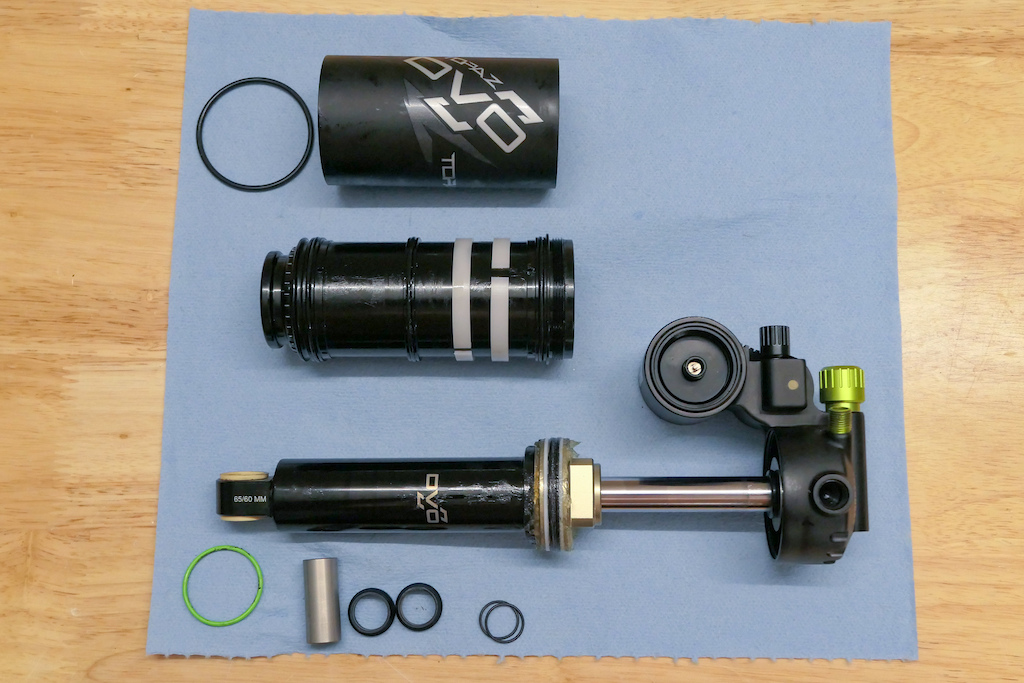
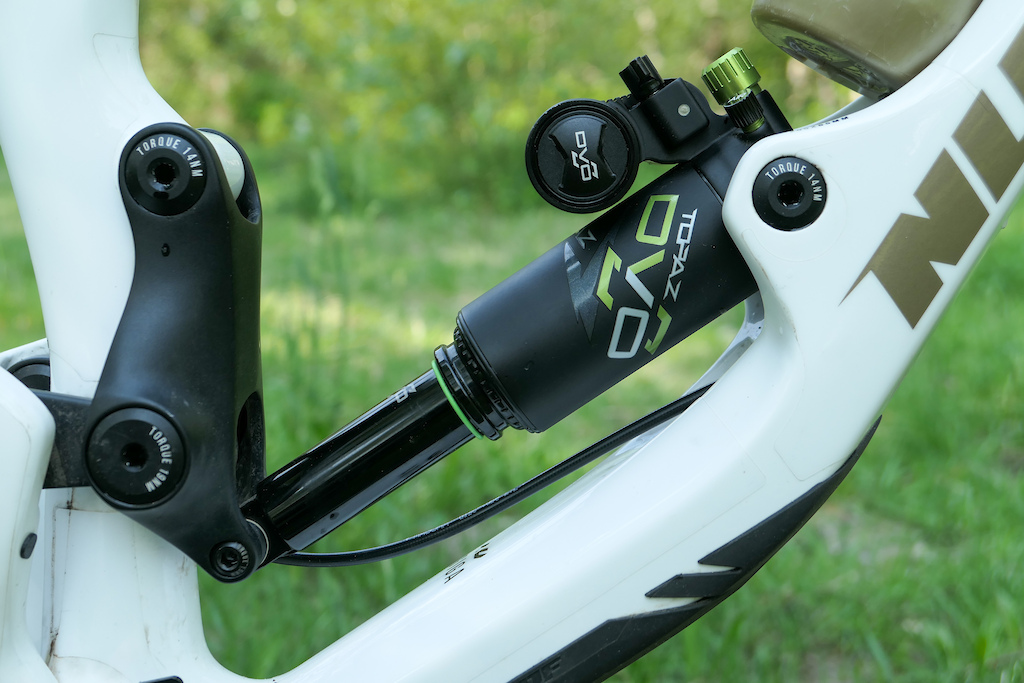
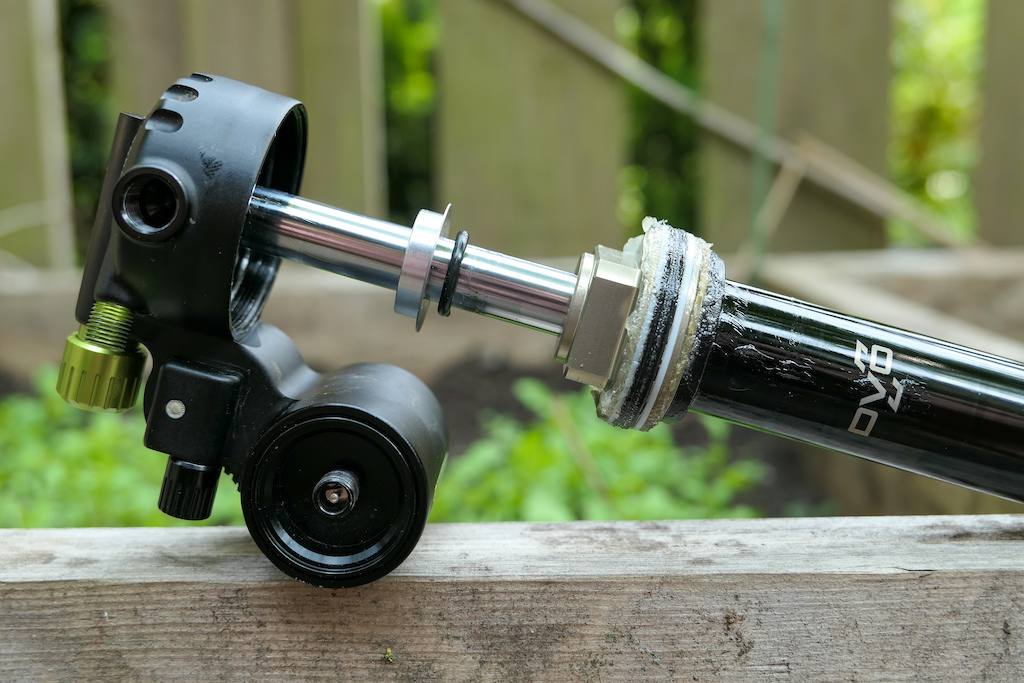
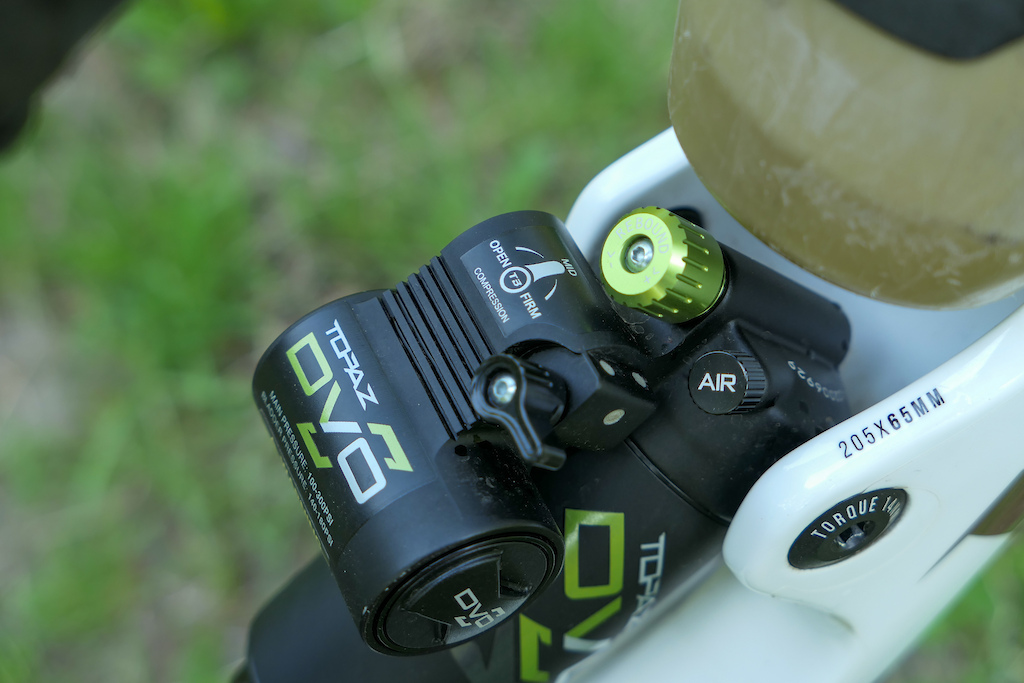
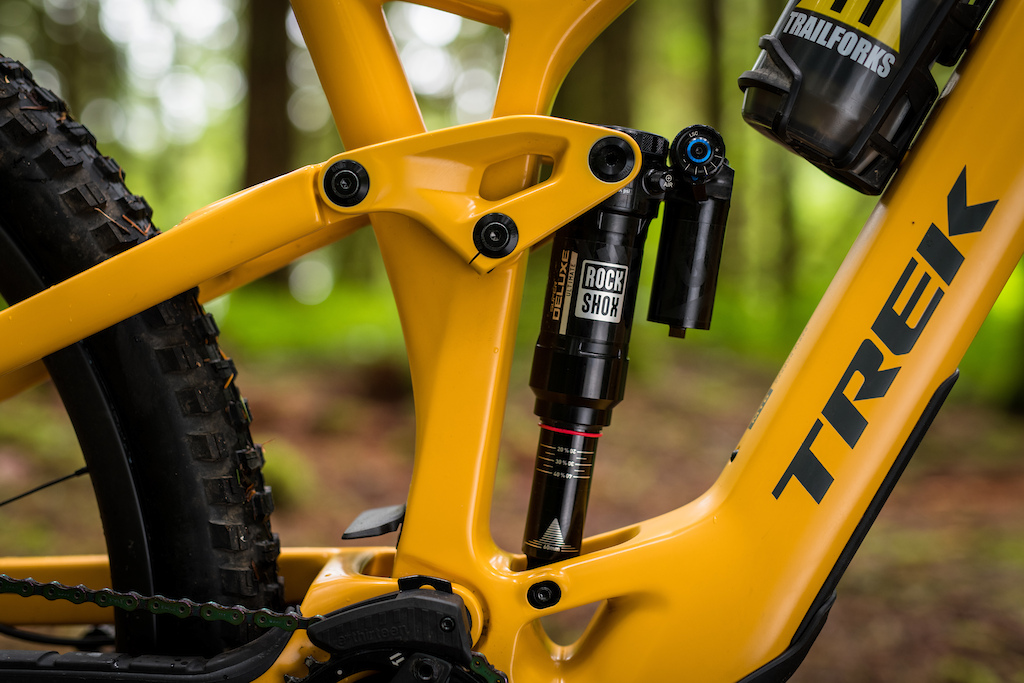
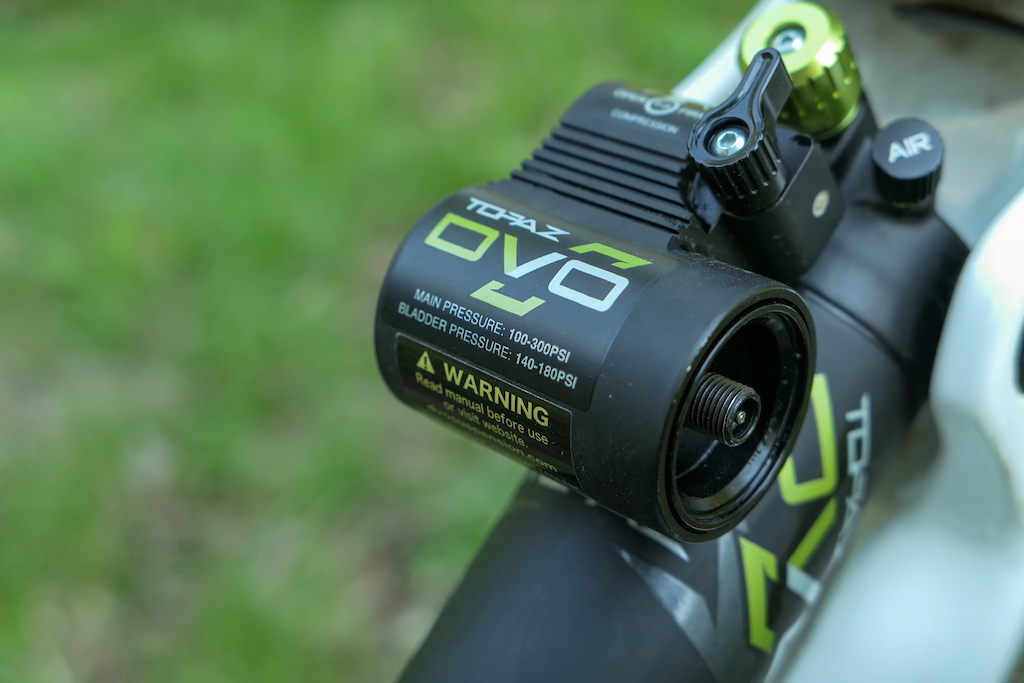

The seal swelling issue is infuriating. It's in one of their rebuild manuals not to use Maxima, but they don't mention RS fluid will do it also (the older fluids). I know a few people who had this issue and it's a huge mess that should have been resolved by now, but continues to be a problem. The only way you can know to avoid this is by calling them or talking to someone that knows, this information really hasn't been propagated the way that it should have been.
They are great folks to deal with on the phone, though, and are super helpful.
My Onyx D1 has been much more reliable and plush than my last Lyrik, and let’s not get started on Float X2 reliability. This is a shock review so let’s keep the forks out of it though.
I’ve tried an old Topaz and loved it so have high hopes for this version based on this review. Good work Matt Beer!
I have owned an emerald, 3 jades , 2 jades xs 3 diamonds and onyx and dc onyx 3 topaz and 3 diamonds. All of this dating back to 2016. I have had problems with most that required not riding for weeks. Both of the jade x the bladders instantly leaked. One took three returns to get it to actually work the way I needed to. The tune was so late in it that on the slowest rebound, setting a 450 pounds spring was like a pogo stick. The standard Jade the shaft came loose from the seal, head twice causing play one Time cracking the shaft. I have rebuilt my onyx over 12 times. The last couple times we’re by DVO themselves. And it will last about two rides before it became so sticky. It wasn’t breaking away under my own way if not more just like Paul Astin’s. I had a terrible top out sound with a diamond in the 170 setting. Having an identical one not doing it sitting next to it.
as I proceed to buy an extra shock because my fox float X2 is on its third warranty rebuild in two years.
I'm not saying your experience is wrong, or not genuine, but we have vastly different perspectives on what to expect from the manufacturer on the home-service side of things.
Also, the number of people here being downvoted for saying they had bad experiences just shows how rabid the fanbases are in the MTB world. There are some brands you just can't criticize without them coming out of the woodwork.
They really should have the Maxima/RS fluid thing plastered in big red letters on their website. It still blows my mind how few people, even suspension shops, know this and makes me wonder how many people are running around with fubared forks from shops using the wrong fluids.
Please tell me where it says dokt use certain oils or where damper rod end is changed or where the bladder is replaced. I’ll wait. Ps service centers don’t have anymore access to this then we do here.
The local distro here has had some of his own parts built to go inside.
In step 19 it says to replace this part, dvosuspension.com/product/damper-end-cap. Is there also something else that needs replacing?
For the bladder, does it need to be replaced every time? Or only if there is damage or it is sucked in? This is the first I have read about needing to replace it.
The whole thing of using bladder pressure as a "tuning" option really bugs me. It just adds to the springrate, it doesnt effect the damping at all, unless as you say, you drop the pressure low enough to allow cavitation, which is a bad idea.
Hmm. Not really. Well kinda, but not in the way being insinuated. Adding pressure to the bladder does little other than increase the springrate slightly. Very slightly. It doesn't change the damping characteristics at all. Its really no different to sticking a couple of psi in the main air chamber.
Again, just my observations. A LOT of people make this mistake.
My main chamber also slowly leaked and persisted to do so despite rebuilding / servicing the shock. I'd go from 25 to 35-40% sag over about a week, very annoying.
When the shock collapsed on me last week on a ride, I gave up on it and bought a dpx2 instead of spending money on another rebuild.
The things that made me completely give up on this shock were the manufacturing inconsistencies and apparent random failures.
The second damper body showed heavy wear on the anodising after a few months, where the first had none, on the exact same bike. When I suggested a manufacturing error they didn't seem to believe it possible.
The damper wand cap was also either chemically welded or insanely tight from the factory. Never before felt like I was risking destroying a shock in disassembly. I torqued it back down to just below the recommended value to try to avoid a repeat issue and it seemed *okay*. The next time I had the air can off, I decided to check the damper cap hadn't loosened, I tightened it 1/16th turn and it started leaking oil.
Overall a disappointing experience, which is too bad because it really was smooth in action.
This shock was meant to accommodate ALL bikes and I think that's why the middle compression setting provides a lot of mid
stroke support - for ebikes, heavier riders, etc.
Keep up the great work DVO - I've owned several of their shocks thru the years..ALL were great and they have fantastic customer service!!!
I really wish this 10 year old false marketing claim would go away.
If you’re going after market just get two shocks if/when the other fails.